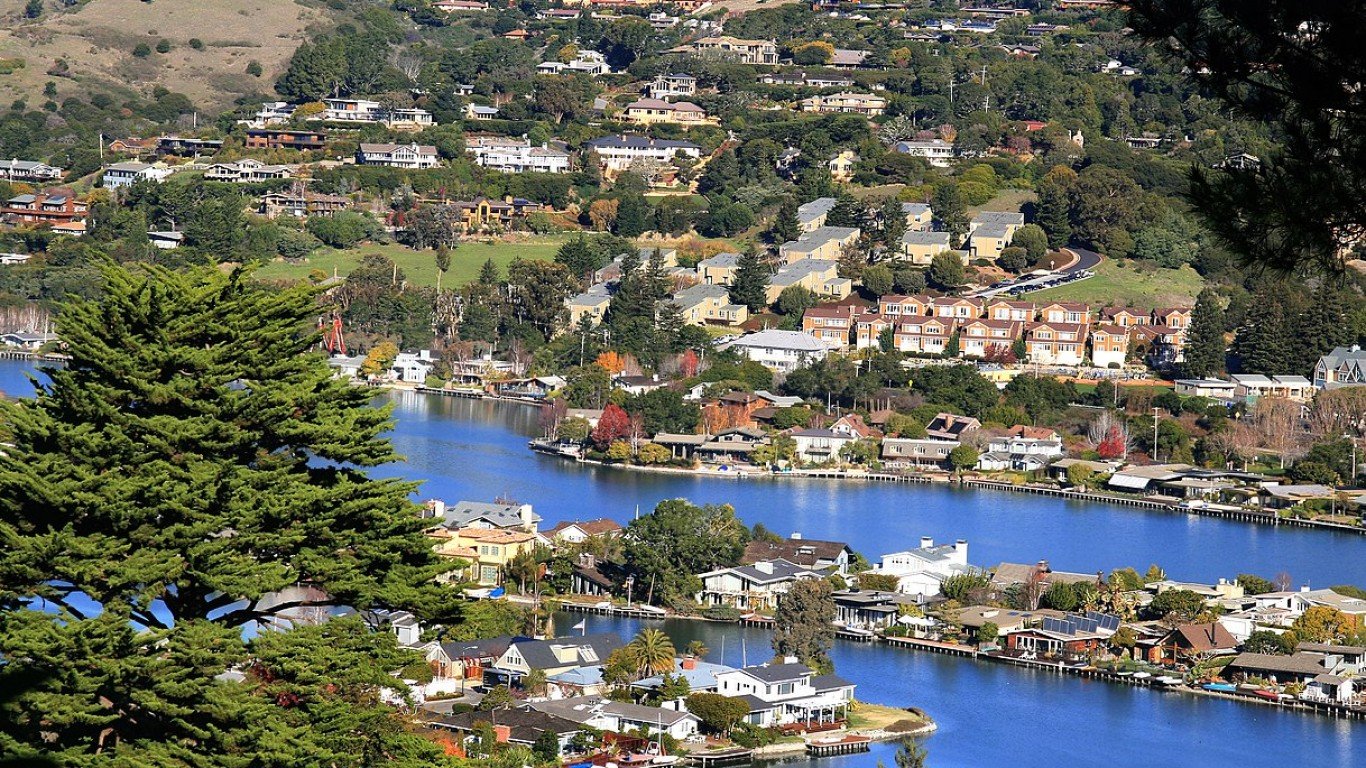

The National Ocean Service puts the total length of the U.S. shoreline at just over 95,000 miles. That does not include America’s inland lakes (other than the Great Lakes, which are included). There are tens of thousands of these lakes, and virtually every state contains some.
Much of this shoreline is habitable, and some of the nation’s largest cities are adjacent to the shore. This includes the country’s two largest cities, New York City and Los Angeles. Other large American cities on the shoreline include Boston, Miami, San Diego and San Francisco.
While most of the large cities have median incomes near the national figure, some are playgrounds for the rich.
To determine America’s richest beach town, 24/7 Tempo reviewed data on beach length, income and occupancy for towns, cities, villages and census-designated places from the U.S. Census Bureau’s 2019 American Community Survey. Beach towns were ranked based on median household income.
The towns we considered have an annual median household income of more than $125,000, nearly double the national median household income of $69,560 in 2019. Five towns have median annual household incomes above $200,000. Poverty rates are also extremely low, in most towns in the single digits. The national poverty rate was 10.5% in 2019.
The towns we looked at are concentrated in only a few states, with New York home to 15, Florida 12 and California eight. The populations of many of these towns are quite small, with 18 of them home to fewer than a thousand permanent residents. Only four are home to more than 10,000 residents. Laguna Beach, California, is the largest, with 23,000 residents.
America’s richest beach town is Belvedere, California. Here are the details:
- Median household income: $245,208
- Poverty rate: 2.7%
- Total population: 2,134
- Length of beach in surrounding county: 20.4 mi.
To be considered a beach town, a place must be in a county with at least 20 miles of beach and have at least 150 housing units, with at least 15 vacant housing units, of which at least 50% must be designated for seasonal, recreational or occasional use. Data on beach length was aggregated using the Beaches NDHPlus Indexed Dataset from the Environmental Protection Agency’s Office of Water Programs.
Click here to see all of America’s richest beach towns.
Essential Tips for Investing: Sponsored
A financial advisor can help you understand the advantages and disadvantages of investment properties. Finding a qualified financial advisor doesn’t have to be hard. SmartAsset’s free tool matches you with up to three financial advisors who serve your area, and you can interview your advisor matches at no cost to decide which one is right for you. If you’re ready to find an advisor who can help you achieve your financial goals, get started now.
Investing in real estate can diversify your portfolio. But expanding your horizons may add additional costs. If you’re an investor looking to minimize expenses, consider checking out online brokerages. They often offer low investment fees, helping you maximize your profit.
Thank you for reading! Have some feedback for us?
Contact the 24/7 Wall St. editorial team.



